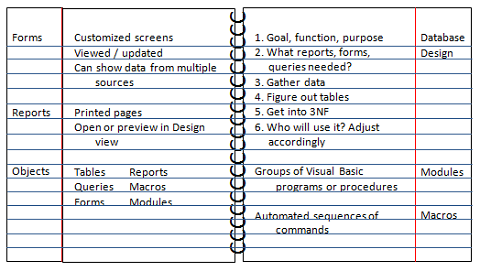Taking
Notes

Taking notes helps you reorganize ideas in ways that make the most sense to you. It helps in remembering concepts later, too. Visual learners benefit because they can see main concepts on a page; tactile learners benefit from the very act of writing the notes in the first place. Auditory learners can read their notes out loud before taking tests or writing papers. You get the idea - this has benefits!
There are several methods for taking notes, and the choice will depend on the note-taker as well as the kind of content that you are reading about; there is not a one-size-fits-all option.
The only "bad" ways to take notes are to write full sentences (which take too long to write and to review) or to fail to organize the material in a visual fashion.
★ Outline
This is the preferred method for organizing a paper's content. You can use the number-letter academic method or bullets, but the concept is the same: organize into groups, and indent subcategories. [Note: If you are required to complete an academic-style outline, remember that you cannot have an A or 1 all by itself; there has to be at least two items in every category.


★ Cornell
Named for the university where it was first used, Cornell works well in live lecture or video note-taking, because you can leave some space on the page and return to it to keep your ideas organized. The left-side "cues" are main ideas. The right side provides details about the cues. The bottom can be used for a summary or for a reference entry. It is similar to the outline in that you are finding ways to separate main ideas from subcategories. The first image here shows the formal Cornell method; the other one is a modification that works well in spiral notebooks.


★ Charting
If you have information that can be categorized, then you can consider charting it. This simply uses rows and columns to identify categories and provide comparisons. It can be completed using tables in Word or in an Excel worksheet.

★ Mapping
This technique, which some call bubbling, has various uses. Other styles of visual mapping for the IT professional can be viewed at this link. You might use a shape-and-arrow method when brainstorming in a group session or when choosing a topic for a paper, but when used to take notes from a reading source, it is not as useful, as it is difficult to get adequate detail in such a diagram. It was still worth mentioning here, however.
Originally created several years back, spontaneously.
Updated April 24, 2022.
Spontaneous Fudge pages ©
Prof. Tamara Fudge
